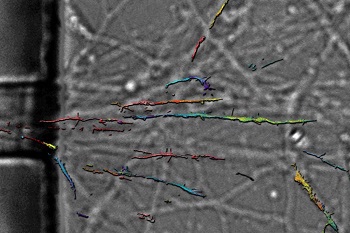 New research might bring a frown to even the most heavily botoxed faces, with scientists finding how some of the potent toxin used for cosmetic surgery escapes into the central nervous system.
New research might bring a frown to even the most heavily botoxed faces, with scientists finding how some of the potent toxin used for cosmetic surgery escapes into the central nervous system.
Researchers at UQ's Queensland Brain Institute have shown how Botox – also known as Botulinum neurotoxin serotype A – is transported via our nerves back to the central nervous system.
Botox – best known for its ability to smooth wrinkles – has been extremely useful for the treatment of over-active muscles and spasticity as it promotes local and long-term paralysis.
QBI laboratory leader Professor Frederic Meunier said people had used the deadliest known neurotoxin, Botox, for decades to treat various conditions and for cosmetic purposes.
“The discovery that some of the injected toxin can travel through our nerves is worrying, considering the extreme potency of the toxin,” Professor Meunier said.
“However, to this day no unwanted effect attributed to such transport has been reported, suggesting that Botox is safe to use,” he said.
“While no side-effects of using Botox medically have been found yet, finding out how this highly active toxin travels to the central nervous system is vital because this pathway is also hijacked by other pathogens such as West Nile or Rabies viruses.
“A detailed understanding of this pathway is likely to lead to new treatments for some of these diseases.”
Dr Tong Wang, a Postdoctoral Research Fellow in Professor Meunier’s laboratory, discovered that most of the toxin is transported to a cellular dump where it is meant to be degraded upon reaching the central nervous system.
“For the first time, we’ve been able to visualise single molecules of Botulinum toxin travelling at high speed through our nerves,” Dr Wang said.
“We found that some of the active toxins manage to escape this route and intoxicate neighbouring cells, so we need to investigate this further and find out how.”
Botox is derived from naturally-occurring sources in the environment.
The study was a collaboration between scientists at the Queensland Brain Institute, UQ’s Australian Institute for Bioengineering and Nanotechnology, the UQ School of Chemical Engineering, the CSIRO and teams from the United States of America, France and the United Kingdom.
The discovery was made possible through cutting-edge microscopy equipment introduced to Queensland by Professor Meunier through a Queensland International Fellowship award and a Linkage Infrastructure, Equipment and Facilities grant from the Australian Research Council.
Findings of the research are published in the Journal of Neuroscience.
Media: QBI Communications, communications@qbi.uq.edu.au; Professor Frederic Meunier, +61 7 3346 6373, +61 405 194 775, f.meunier@uq.edu.au.



